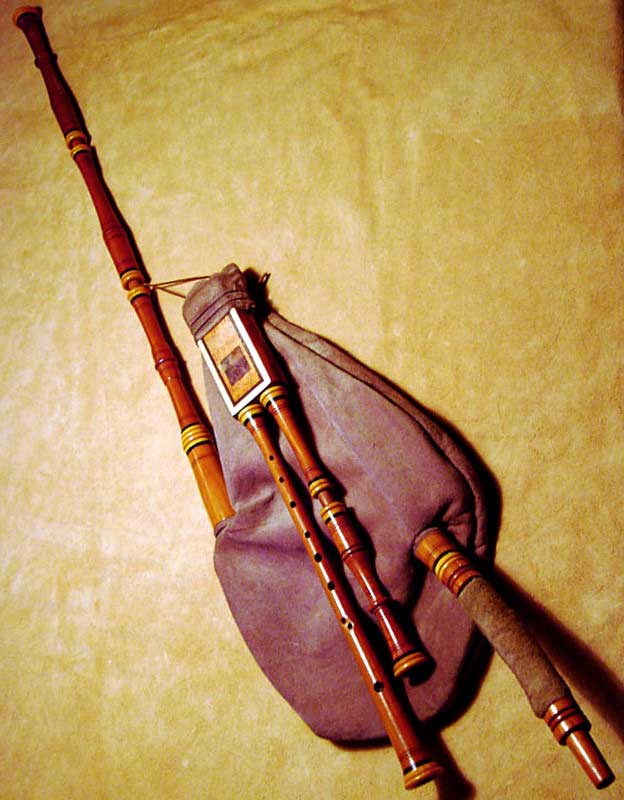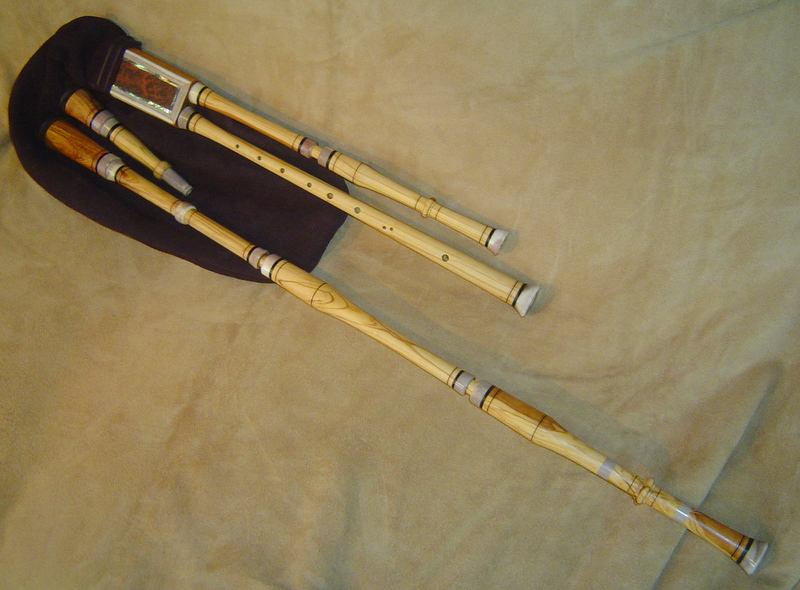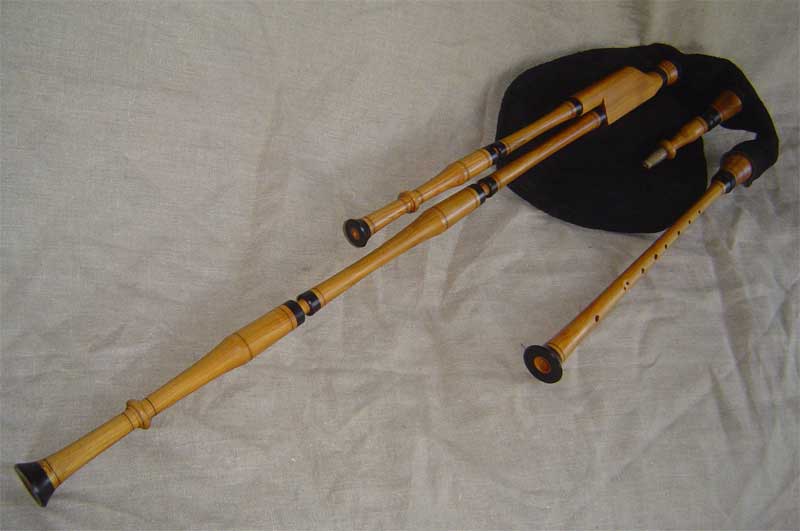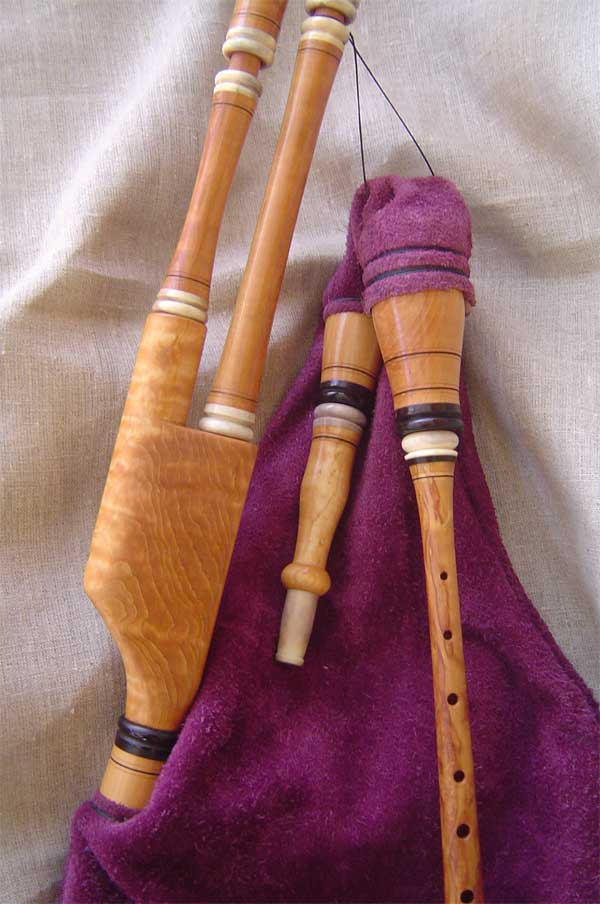
Musette Béchonnet
Musette "Béchonnet" & Cornemuse des Bourbonnais
He lived in Effiat on the border between Auvergne and Boubonnais and was a clog-maker and turner. Béchonnet succeeded in building an almost chromatic chanter, which extended over 1½ octaves.
He also added a third drone fitting into the chanter-stock(tete) and used a pair of bellows instead of blowing by mouth.
Fingering & range D/G
Fingering & range F/Bb
Fingering & range G/C
Fingering & range A/D
Many chanters, built by todays bagpipe-makers, have their roots in Béchonnets´ invention.
I build my Musette Béchonnet with two drones (one, respective two octaves under the chanters lowest tone,”6-fingering”) or three drones (+ the same octave as the chanters´ lowest tone).
The big drone lies either over the shoulder or bent forward.
As in all of my bagpipes I offer a mouth-blown and a bellow-blown version.
The following keys are available (6-fingering/3fingering):
A/D, G/C, F/Bb,
French bagpipes tuned in D/G are usually called Cornemuse des Bourbonnais.
The beautiful inlays in the individual doublestocks are always especially interesting and creative.

Musette Béchonnet

Shepherds pipes
Shepherds pipes ("Schaper Pfeiff")
This is my free interpretation of the so called Schaper Pfeiff that we find in Michael Praetorius famous Syntagma Musicum (Wölfenbüttel, 1619) .
The shepherds pipes have a conical chanter, where the sound is produced through a double reed.
They can be overblown a half octave, giving a range of 1½ octaves including nearly all semi-tones.
The two drones sit parallel in a doublestock and are tuned one and two octaves respectively below the chanters lowest tone ("6-fingering").
The drones, which have single reeds, lie either over the shoulder or bent forwards.
The following keys are available:
A/A
G/C
F/Bb
D/G
(6-/3-fingering)

